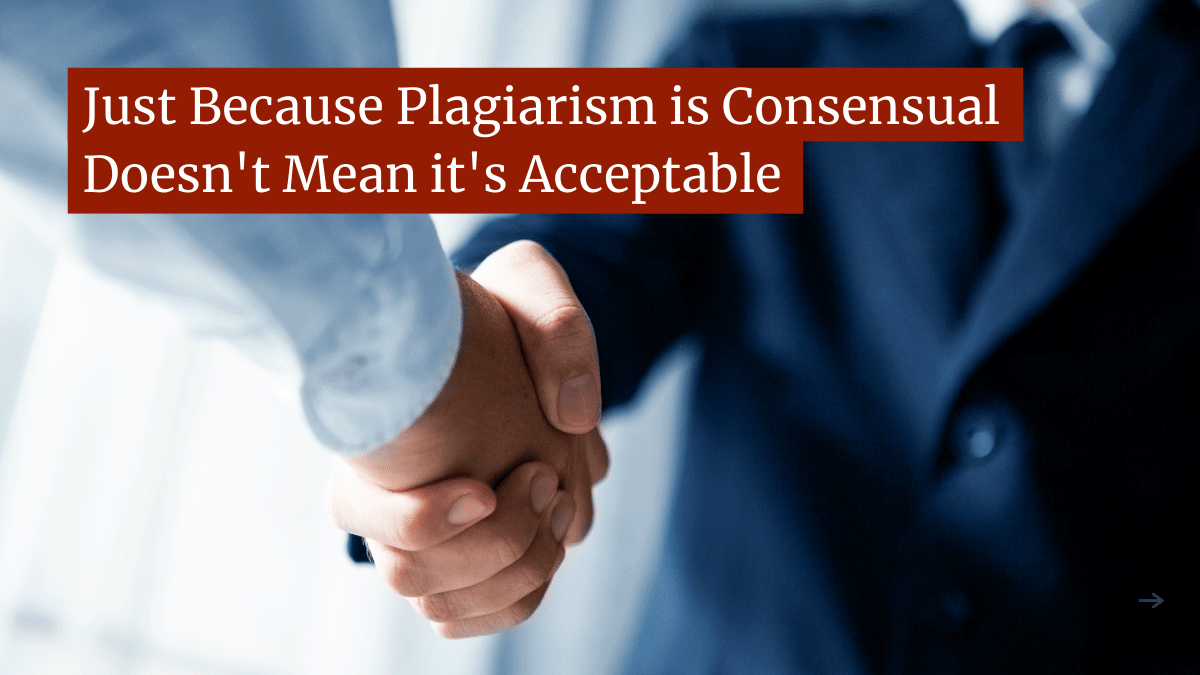The Problem with Consensual Plagiarism
Earlier today, video game critic and prominent YouTuber James Stephanie Sterling posted a video calling out a marketing firm working for Activision Blizzard in the run-up to the release of Call of Duty: Modern Warfare 2.
According to Sterling, an agency known as Hill + Knowlton Strategies reached out to a colleague of theirs, Laura Kate Dale, offering not just review keys to the game, but “features” that they could run on their site.
Sterling referred to this as “consensual plagiarism”, meaning that the marketing firm was making these works available for journalists and to use, with or without attribution, on their sites.
Sterling also said that they found one small site that had wholesale published one of those features though, after they were approached about it, removed the post.
However, this practice is far from uncommon. Press release plagiarism is a tremendous problem in modern journalism, in particular with video games, and, while Sterling was aware of one site that took the bait, there are many others that did so as well.
All one has to do is understand how these “features” are regularly used, and it becomes easy to spot sites and publications that cribbed from them.
How Press Releases Are Often Misused
Press releases and feature articles are routinely provided to publications with the hope that it will encourage the reporters to cover whatever positive news the company wishes to highlight.
Publications are certainly free to copy the releases wholesale, and some do, but the more typical misuse is copying and pasting text from the press release and mixing it with original content, all the while not acknowledging the source.
To illustrate this, Sterling posted a screenshot of one of the features, including the first few paragraphs of text. Searching for that text, you quickly find a slew of sites that have published it, either in whole or in part.

For example, this article by Liam Mart at The Daily Express carries Mart’s byline and makes no mention of the press release, but copies the text from it wholesale, only changing the title. For a more rewritten version, one more typical of this type of practice, you can see Unlimited Tech’s version here with text highlights.
There are many other sites that feature the text, either in whole or with rewriting, and virtually none mention that the text comes largely from a press release.
Unfortunately, while it’s easy to call out these examples. It’s clear to see that it’s not a problem limited to one or two sites. It’s an industry-wide problem and one where the ethics need to be made more clear.
Why Press Release Plagiarism Happens – and Why it Matters
Press release plagiarism is extremely common. It’s very much a product of modern journalism. As newsrooms have shrunk, but the thirst for content has grown, journalists have been tasked with writing more and more content.
Inevitably, some are going to take shortcuts. To that end, copying and pasting press releases can seem like a no-brainer as companies are happy for journalists to do that, eliminating the threat of copyright issues.
This problem is even worse in video game journalism. Staying on the good side of companies is crucial to getting access to review copies and inside information that generates clicks. One easy way to do that is to simply repeat what was published in the press release.
However, this is no different from a student who turns in a paper purchased from an essay mill. Sure, the essay mill granted permission, but it’s still not the student’s work. It’s not a fair representation of the student’s ability and understanding of the subject.
For journalists, this problem is even worse. As we’ve discussed repeatedly before, there are two victims to every plagiarism: The person plagiarized and the audience that’s lied to. Though the person being plagiarized may not care, the audience still has to be addressed.
With journalism, the audience is expecting the journalist to perform their own analysis. The journalist isn’t supposed to just take a company’s word. They are expected to validate the claims, inspect the presented facts and draw an independent conclusion.
Repeating a press release, especially without citing it, defeats that purpose. A journalist who does this is not a journalist, but another marketer for the company, and they aren’t disclosing it.
To be clear, press releases are fine to use in journalism, but they must be cited as such. Just as you would cite a quote from a person, one should also cite text taken from a press release.
Not doing so defeats the purpose of having a journalist as an intermediary. In short, without proper citation, it’s not journalism at all, just promotion.
Bottom Line
What happened to Dale and Sterling is not unique or rare. What is perhaps most unusual is that it was offered to Dale, someone who, like Sterling, has been very vocal about the ethical failings of the video game industry.
Given the video game industry’s reputation for only working with “friendly” reporters, this was a shocking oversight by their marketing team. That mistake is why we know about this particular campaign.
However, this is unfortunately just par for the course when it comes to modern journalism. The misuse of press releases, or consensual plagiarism to use Sterling’s term, is rampant on the internet, in particular with smaller sites.
Unfortunately, that is what happens when you combine increasing pressures to write, with less experienced journalists and intense pressure from companies.
Though companies have been sending press releases for centuries, the internet has made that strategy more effective than ever, making it easier to get even their exact words into publications all over the world. Test again.
Want to Reuse or Republish this Content?
If you want to feature this article in your site, classroom or elsewhere, just let us know! We usually grant permission within 24 hours.
